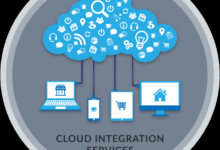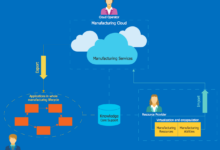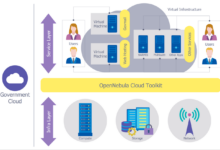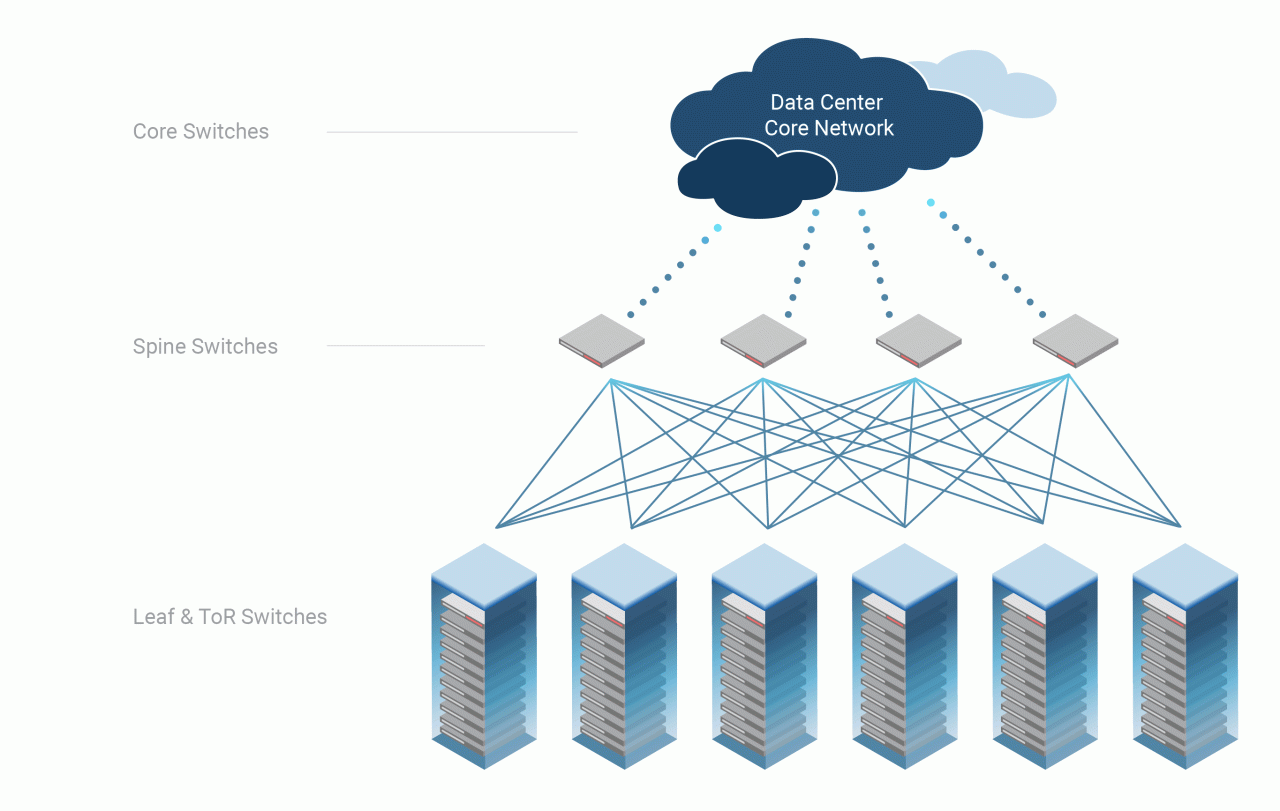Cloud Networking Infrastructure as a Service (IaaS): Transforming Networks for the Modern Era
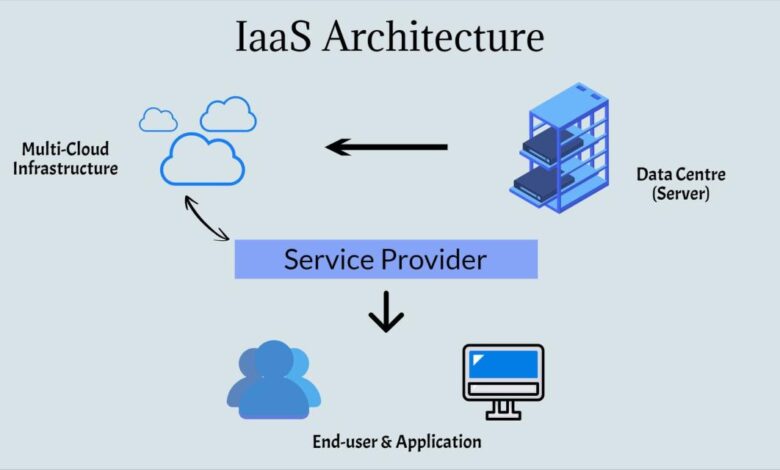
Cloud networking infrastructure as a service (IaaS) has emerged as a game-changer in the world of networking, offering businesses unparalleled flexibility, scalability, and cost-effectiveness. Dive into this comprehensive guide to discover the transformative power of cloud networking IaaS and how it can revolutionize your network infrastructure.
From exploring the core concepts and benefits of cloud networking IaaS to delving into best practices and emerging trends, this guide provides a holistic understanding of this transformative technology. Whether you’re a seasoned IT professional or just starting your journey into cloud networking, this guide will equip you with the knowledge and insights you need to harness the full potential of cloud networking IaaS.
Definition of Cloud Networking Infrastructure as a Service (IaaS)
Cloud networking infrastructure as a service (IaaS) provides the foundational network connectivity and infrastructure components required for cloud-based applications and services. IaaS providers offer a range of services, including virtual networks, routers, firewalls, and load balancers, allowing organizations to build and manage their network infrastructure in the cloud.
Key Components and Services
IaaS providers offer a comprehensive suite of networking components and services, including:
Virtual networks
Isolated and secure network segments that provide connectivity within a cloud environment.
Routers
Virtualized network devices that control traffic flow and connect different network segments.
Firewalls
Virtualized security devices that protect networks from unauthorized access and threats.
Load balancers
Virtualized devices that distribute traffic across multiple servers, ensuring high availability and performance.
Network monitoring and management tools
Provide visibility and control over network performance and security.
Use Cases
Cloud networking IaaS is used in a wide range of scenarios, including:
- Building and managing private cloud networks
- Connecting cloud-based applications to on-premises resources
- Providing secure and scalable network connectivity for SaaS applications
- Enabling hybrid cloud deployments, connecting on-premises networks to cloud environments
- Facilitating disaster recovery and business continuity through cloud-based network infrastructure
Benefits of Using Cloud Networking IaaS
Cloud networking IaaS offers numerous benefits to businesses, including cost savings, improved scalability and flexibility, and enhanced security.
Cost Savings
Cloud networking IaaS can significantly reduce networking costs compared to traditional on-premises solutions. By eliminating the need for physical hardware, such as routers, switches, and firewalls, businesses can save on capital expenditures. Additionally, cloud networking IaaS providers typically offer pay-as-you-go pricing models, which allow businesses to only pay for the resources they use.
This can result in significant cost savings, especially for businesses with fluctuating network traffic.
For example, a study by Forrester Research found that businesses can save up to 60% on networking costs by using cloud networking IaaS. Another study by IDC found that businesses can save an average of $250,000 per year by migrating their networking infrastructure to the cloud.
Scalability and Flexibility
Cloud networking IaaS provides businesses with the scalability and flexibility they need to meet changing business demands. Cloud networking IaaS providers offer a wide range of networking services, such as virtual private clouds (VPCs), virtual routers, and virtual firewalls, that can be easily scaled up or down to meet the needs of the business.
This allows businesses to quickly and easily adapt their networks to changes in traffic patterns or business requirements.
For example, a retail business can use cloud networking IaaS to scale up its network during peak shopping seasons to handle increased traffic. A healthcare provider can use cloud networking IaaS to quickly provision new virtual networks for new clinics or hospitals.
Security
Cloud networking IaaS can help businesses to protect their networks from security threats. Cloud networking IaaS providers offer a variety of security features, such as firewalls, intrusion detection systems, and access control lists, that can help to protect networks from unauthorized access and malicious attacks.
For example, a financial services company can use cloud networking IaaS to protect its network from cyberattacks. A government agency can use cloud networking IaaS to protect its network from unauthorized access.
– Provide an overview of the different types of cloud networking IaaS services available.
Cloud networking IaaS services offer a wide range of options to meet the diverse needs of businesses. Here are some of the most common types:
Virtual Private Clouds (VPCs)
VPCs are private, isolated networks within the cloud that provide a secure and controlled environment for deploying and managing applications and workloads. They offer features such as network segmentation, IP address management, and firewalling.
Virtual Routers
Virtual routers are network devices that connect different VPCs and provide routing services. They enable businesses to create complex network topologies and manage traffic flow between different parts of their cloud infrastructure.
Load Balancers
Load balancers distribute incoming traffic across multiple servers or applications, ensuring high availability and performance. They can be used to handle sudden spikes in traffic and prevent outages.
Firewalls
Firewalls are security devices that monitor and control incoming and outgoing network traffic. They can be used to protect cloud environments from unauthorized access and malicious attacks.
DNS Services
DNS services provide name resolution, translating domain names into IP addresses. They are essential for enabling users to access applications and services in the cloud.
Considerations for Choosing a Cloud Networking IaaS Provider
Selecting the right cloud networking IaaS provider is crucial for ensuring a seamless and efficient networking infrastructure. Here are some key factors to consider:
Reliability and Performance
- Assess the provider’s track record of uptime and performance.
- Look for providers with redundant infrastructure and multiple data centers to ensure high availability.
- Consider providers that offer performance guarantees and SLAs (Service Level Agreements).
Security
- Evaluate the provider’s security measures, including encryption, access controls, and compliance certifications.
- Choose providers that adhere to industry-standard security protocols and best practices.
- Consider providers that offer additional security features, such as DDoS protection and intrusion detection systems.
Global Network Presence
- If your organization operates globally, choose a provider with a wide-reaching network presence.
- This ensures low latency and high performance for users across different regions.
- Consider providers with multiple points of presence (PoPs) and connections to major internet exchanges.
Best Practices for Using Cloud Networking IaaS
Implementing cloud networking IaaS effectively requires careful planning and adherence to best practices. By following these guidelines, organizations can optimize their cloud networking infrastructure for performance, security, and cost-effectiveness.
Network Segmentation and Security Measures
Network segmentation divides the network into isolated segments, limiting the impact of security breaches and improving overall network security. Implementing firewalls, intrusion detection systems (IDS), and access control lists (ACLs) further enhances security by controlling network traffic and preventing unauthorized access.
Automation and Monitoring
Automation streamlines network management tasks, reducing manual effort and minimizing human error. Monitoring tools provide real-time visibility into network performance, allowing administrators to proactively identify and resolve issues before they impact business operations.
Case Studies of Cloud Networking IaaS Implementations: Cloud Networking Infrastructure As A Service (IaaS)
Cloud networking IaaS has transformed how businesses design, deploy, and manage their networks. This section presents real-world case studies that demonstrate the successful implementation of cloud networking IaaS and the tangible benefits achieved.
These case studies are organized into the following categories:
- Industry:Finance, healthcare, retail, etc.
- Cloud provider:AWS, Azure, GCP, etc.
- Network type:Private cloud, hybrid cloud, multi-cloud
Each case study provides the following information:
- Company name
- Industry
- Cloud provider
- Network type
- Challenges faced
- Benefits achieved
- Lessons learned
These case studies offer valuable insights into the practical applications of cloud networking IaaS and the benefits it can bring to businesses of all sizes and industries.
Future Trends in Cloud Networking IaaS
The future of cloud networking IaaS is bright, with a number of emerging trends that will shape the way networks are designed and managed. These trends include the increasing adoption of software-defined networking (SDN), the growth of multi-cloud environments, and the rise of edge computing.
SDN is a networking approach that allows network administrators to programmatically control the network. This gives them greater flexibility and control over the network, and it can also help to improve performance and security. SDN is expected to become increasingly popular in the coming years, as it can help organizations to meet the demands of the digital age.
Multi-cloud environments are becoming increasingly common, as organizations adopt multiple cloud providers to meet their different needs. This can be a challenge to manage, but it can also provide organizations with greater flexibility and resilience. Cloud networking IaaS providers are developing new solutions to help organizations manage multi-cloud environments, and this trend is expected to continue in the coming years.
Edge computing is a distributed computing paradigm that brings computing resources closer to the edge of the network. This can help to improve performance and reduce latency, and it can also make it easier to connect to devices that are not located in a central location.
Edge computing is expected to become increasingly popular in the coming years, as it can help organizations to meet the demands of the Internet of Things (IoT).
Benefits of Cloud Networking IaaS Trends
- Increased flexibility and control over the network
- Improved performance and security
- Greater flexibility and resilience for multi-cloud environments
- Improved performance and reduced latency for edge computing
Challenges of Cloud Networking IaaS Trends
- Managing multi-cloud environments can be complex
- Edge computing can introduce new security risks
Challenges of Cloud Networking IaaS
While cloud networking IaaS offers numerous benefits, it also comes with its share of challenges. Understanding and addressing these challenges is crucial for a successful deployment.One significant challenge is managing network complexity. Cloud networking IaaS environments can be highly complex, with multiple interconnected networks and services.
This complexity can make it difficult to manage and troubleshoot network issues. Proper planning and implementation are essential to overcome this challenge.Another challenge is ensuring security. Cloud networking IaaS environments can be vulnerable to security breaches if not properly secured.
It is important to implement robust security measures, such as firewalls, intrusion detection systems, and access controls, to protect against unauthorized access and data breaches.Cost management is also a challenge in cloud networking IaaS. Cloud networking services can be expensive, and it is important to carefully monitor and manage costs to avoid overspending.
Proper planning and budgeting can help organizations optimize their cloud networking costs.
Overcoming Challenges
Overcoming the challenges of cloud networking IaaS requires proper planning, implementation, and ongoing management. Organizations should carefully assess their networking needs and develop a comprehensive plan before deploying cloud networking IaaS. This plan should include detailed network architecture, security measures, and cost management strategies.Organizations
should also partner with experienced cloud networking providers who can provide guidance and support throughout the deployment and management process. By following best practices and working with reliable providers, organizations can mitigate risks and ensure a successful cloud networking IaaS deployment.
Comparison of Cloud Networking IaaS with Traditional Networking
Cloud networking IaaS and traditional networking solutions offer distinct advantages and limitations. Understanding these differences can help businesses make informed decisions about their networking infrastructure.
Benefits of Cloud Networking IaaS
- Cost-effective:Cloud networking IaaS eliminates the need for expensive hardware and maintenance costs.
- Scalable:Cloud networks can be easily scaled up or down to meet changing demands.
- Flexible:Cloud networks offer a wide range of customization options, allowing businesses to tailor their network to specific requirements.
- Secure:Cloud providers implement robust security measures to protect network data and infrastructure.
Limitations of Cloud Networking IaaS
- Reliability:Cloud networks can be affected by outages or performance issues beyond the control of the business.
- Latency:Data transmission over the internet can introduce latency, which may not be suitable for applications requiring real-time performance.
- Vendor lock-in:Businesses may become dependent on a specific cloud provider, limiting their flexibility in the future.
Benefits of Traditional Networking
- Control:Businesses have complete control over their network infrastructure, allowing for greater customization and flexibility.
- Performance:Dedicated hardware and local connectivity provide high performance and low latency.
- Security:Businesses can implement their own security measures, providing a higher level of control over network protection.
Limitations of Traditional Networking
- Cost:Hardware, maintenance, and power consumption can be expensive.
- Scalability:Scaling traditional networks can be complex and time-consuming.
- Flexibility:Traditional networks are less flexible than cloud networks, making it difficult to adapt to changing requirements.
Factors to Consider
When choosing between cloud networking IaaS and traditional networking, businesses should consider the following factors:
- Cost and budget constraints
- Scalability and flexibility requirements
- Security and compliance needs
- In-house IT expertise and resources
Conclusion
Cloud networking IaaS offers significant benefits in terms of cost, scalability, and flexibility, while traditional networking provides greater control and performance. Businesses should carefully consider their specific requirements and limitations to determine the best networking solution for their needs.
Role of Cloud Networking IaaS in Hybrid Cloud Environments
In hybrid cloud environments, cloud networking IaaS plays a critical role in seamlessly connecting on-premises and cloud resources. It provides a flexible and scalable network infrastructure that enables seamless communication, data transfer, and application integration between different cloud platforms and on-premises networks.
Cloud networking IaaS offers numerous benefits in hybrid cloud environments, including:
- Improved connectivity and performance:Cloud networking IaaS provides a high-performance and reliable network infrastructure that optimizes connectivity between on-premises and cloud resources, reducing latency and improving application performance.
- Enhanced security:Cloud networking IaaS offers advanced security features, such as firewalls, intrusion detection systems, and encryption, to protect data and applications in hybrid cloud environments.
- Increased flexibility and scalability:Cloud networking IaaS provides a flexible and scalable network infrastructure that can be easily adapted to changing business needs and workload demands, enabling organizations to scale their networks up or down as required.
- Reduced costs:Cloud networking IaaS can help organizations reduce their network infrastructure costs by eliminating the need for expensive hardware and maintenance, as well as by optimizing network utilization and reducing bandwidth costs.
However, using cloud networking IaaS in hybrid cloud environments also presents some challenges:
- Complexity:Implementing and managing cloud networking IaaS in hybrid cloud environments can be complex, requiring expertise in both cloud networking and on-premises network management.
- Security concerns:Connecting on-premises networks to the cloud can introduce new security risks, such as increased exposure to cyber threats and data breaches.
- Vendor lock-in:Choosing a cloud networking IaaS provider can lead to vendor lock-in, limiting an organization’s flexibility to switch providers in the future.
To successfully implement and manage cloud networking IaaS in hybrid cloud environments, organizations should follow best practices, such as:
- Carefully planning and designing the network architecture:Organizations should carefully plan and design their hybrid cloud network architecture to ensure optimal performance, security, and scalability.
- Choosing the right cloud networking IaaS provider:Organizations should evaluate different cloud networking IaaS providers based on their specific requirements, such as performance, security, scalability, and cost.
- Implementing robust security measures:Organizations should implement robust security measures, such as firewalls, intrusion detection systems, and encryption, to protect data and applications in hybrid cloud environments.
- Continuously monitoring and managing the network:Organizations should continuously monitor and manage their hybrid cloud network to ensure optimal performance, security, and compliance.
Here are some real-world use cases for cloud networking IaaS in hybrid cloud environments:
- Connecting on-premises data centers to the cloud:Cloud networking IaaS can be used to connect on-premises data centers to the cloud, enabling organizations to migrate workloads to the cloud while maintaining connectivity with their existing infrastructure.
- Extending on-premises networks to the cloud:Cloud networking IaaS can be used to extend on-premises networks to the cloud, providing secure and reliable connectivity for remote users and branch offices.
- Creating hybrid cloud applications:Cloud networking IaaS can be used to create hybrid cloud applications that seamlessly integrate on-premises and cloud resources, providing increased flexibility and scalability.
The future of cloud networking IaaS in hybrid cloud environments is promising, with advancements in technology and the growing adoption of hybrid cloud architectures. Cloud networking IaaS will continue to evolve to provide even more advanced features, such as:
- Enhanced automation and orchestration:Cloud networking IaaS will become more automated and orchestrated, enabling organizations to manage their hybrid cloud networks more efficiently.
- Improved security:Cloud networking IaaS will incorporate more advanced security features, such as artificial intelligence (AI) and machine learning (ML), to protect data and applications in hybrid cloud environments.
- Greater flexibility and scalability:Cloud networking IaaS will become even more flexible and scalable, enabling organizations to adapt their networks to changing business needs and workload demands.
– Security Considerations for Cloud Networking IaaS
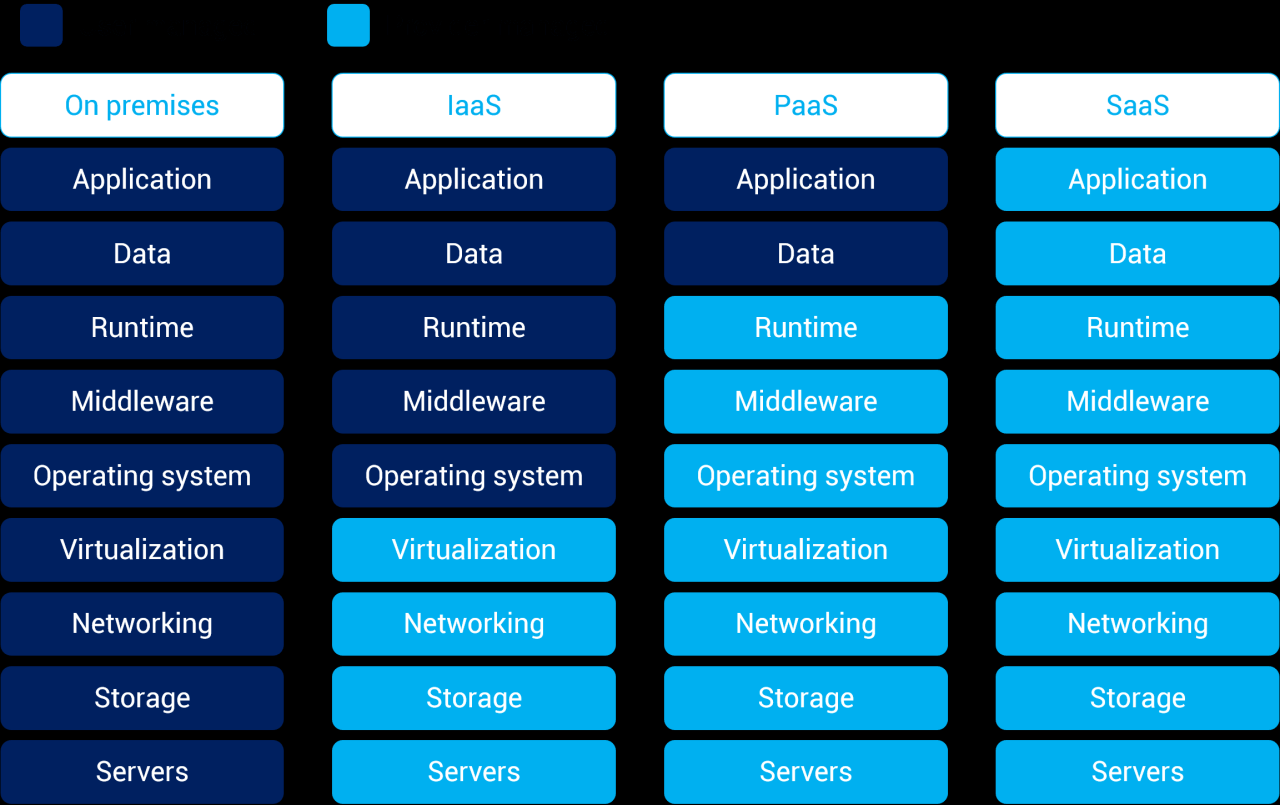
Security is a critical consideration for any cloud deployment, and cloud networking IaaS is no exception. The shared responsibility model for security in cloud computing means that both the cloud provider and the customer are responsible for securing their respective components of the cloud environment.
For cloud networking IaaS, the cloud provider is responsible for securing the underlying infrastructure, including the network hardware, software, and operating system. The customer is responsible for securing their own virtual networks, workloads, and applications that run on the cloud provider’s infrastructure.
– Best Practices for Securing Cloud Networking IaaS Deployments
- Vulnerability Management:Regularly scan for vulnerabilities, patch vulnerabilities promptly, and use vulnerability management tools.
- Network Segmentation:Segment networks into different zones, use firewalls to control traffic between zones, and implement microsegmentation.
- Access Control:Use strong passwords, implement two-factor authentication, and use role-based access control.
- Logging and Monitoring:Log all network activity, monitor network activity for suspicious activity, and use log analysis tools.
- Incident Response:Have an incident response plan in place, train staff on incident response procedures, and test incident response procedures regularly.
- Compliance:Review compliance requirements carefully, implement controls to meet compliance requirements, and get third-party audits to verify compliance.
Performance Optimization for Cloud Networking IaaS
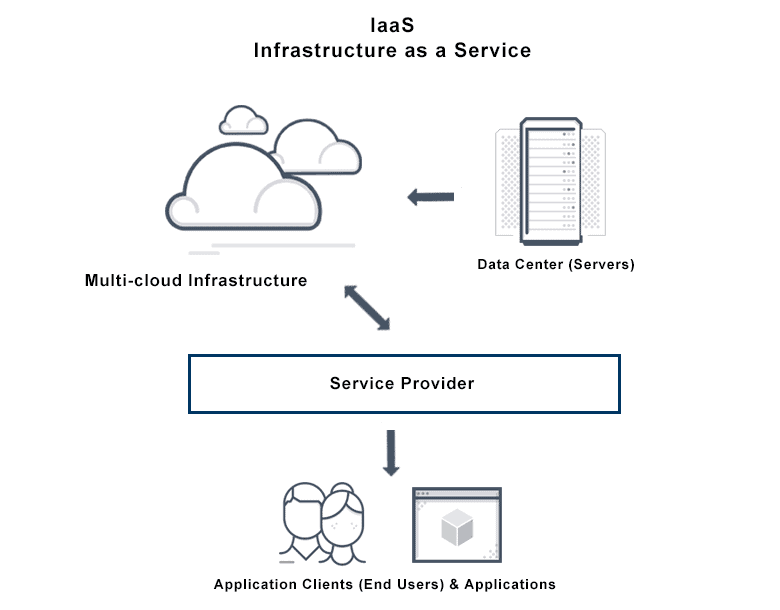
Optimizing network performance is crucial for maximizing the efficiency and user experience of cloud networking IaaS. By optimizing performance, businesses can ensure that their applications and services are delivered seamlessly, without interruptions or delays.
Best practices for optimizing network performance include:
- Traffic engineering:Optimizing the flow of network traffic to improve efficiency and reduce latency.
- Load balancing:Distributing traffic across multiple servers or network devices to improve performance and reliability.
Additionally, using performance monitoring tools is essential for ensuring optimal performance. These tools can provide real-time insights into network performance, allowing businesses to identify and address any issues promptly.
Benefits of Performance Optimization
- Improved application performance and user experience
- Reduced latency and jitter
- Increased network efficiency and utilization
- Enhanced reliability and availability
Case Study, Cloud networking infrastructure as a service (IaaS)
A large e-commerce company implemented performance optimization techniques for its cloud networking IaaS, resulting in a 30% reduction in network latency and a 20% increase in application performance. This led to improved customer satisfaction and increased revenue.
– Discuss the cost management considerations for using cloud networking IaaS, including bandwidth costs, data transfer costs, and other relevant factors.
Cost management is a critical aspect of using cloud networking IaaS. Organizations need to be aware of the various cost factors involved, such as bandwidth costs, data transfer costs, and other relevant factors, to optimize their spending and avoid unexpected expenses.
Bandwidth costs
Bandwidth costs are typically charged on a per-hour basis, and the rates vary depending on the provider and the region. Organizations need to estimate their bandwidth requirements and choose a provider that offers competitive rates.
Data transfer costs
Data transfer costs are incurred when data is transferred between different regions or between the cloud and on-premises networks. These costs can vary depending on the amount of data transferred and the distance between the locations.
Other relevant factors
Other relevant factors that can affect the cost of cloud networking IaaS include:
- Number of virtual machines (VMs) and their configurations
- Number of network interfaces
- Type of network traffic (e.g., HTTP, HTTPS, SSH)
- Usage of managed services
– Explain the benefits of integrating cloud networking IaaS with other cloud services, such as compute, storage, and databases, in detail, including cost savings, improved performance, and increased flexibility.
Integrating cloud networking IaaS with other cloud services offers numerous advantages for organizations. These benefits include cost savings, improved performance, and increased flexibility.
By leveraging API integrations, direct connections, and managed services, organizations can seamlessly connect their networking infrastructure to other cloud services, such as compute, storage, and databases. This integration enables organizations to:
- Reduce costs:By integrating networking IaaS with other cloud services, organizations can eliminate the need for separate networking hardware and software, resulting in significant cost savings.
- Improve performance:Direct connections between networking IaaS and other cloud services minimize latency and improve overall network performance, leading to faster application response times and enhanced user experience.
- Increase flexibility:Integration with other cloud services provides organizations with greater flexibility to scale their networking infrastructure on demand, meeting the changing needs of their applications and business.
Integration Options and Best Practices
Organizations can integrate cloud networking IaaS with other cloud services through various methods, including:
- API integrations:APIs allow organizations to programmatically connect their networking infrastructure to other cloud services, enabling automated provisioning and management.
- Direct connections:Direct connections provide dedicated, high-performance links between networking IaaS and other cloud services, minimizing latency and improving performance.
- Managed services:Managed services offer a turnkey solution for integrating networking IaaS with other cloud services, providing organizations with simplified management and reduced downtime.
When choosing an integration method, organizations should consider factors such as the level of control, performance requirements, and cost implications.
Emerging Technologies in Cloud Networking IaaS
The cloud networking IaaS landscape is constantly evolving, with new technologies emerging all the time. These technologies have the potential to revolutionize the way we design, deploy, and manage our networks. In this section, we will discuss some of the most important emerging technologies in cloud networking IaaS and explore their potential benefits and challenges.
Software-Defined Networking (SDN)
Software-defined networking (SDN) is a new approach to network management that decouples the control plane from the data plane. This allows network administrators to program the network using software, which gives them greater flexibility and control over their networks. SDN is still a relatively new technology, but it has the potential to revolutionize the way we manage networks.
It can make networks more agile, scalable, and secure.
Network Function Virtualization (NFV)
Network function virtualization (NFV) is a technology that allows network functions to be virtualized and run on standard hardware. This can save costs and improve flexibility by allowing network operators to deploy new network functions quickly and easily. NFV is still in its early stages of development, but it has the potential to revolutionize the way we deploy and manage network functions.
Cloud-Native Networking
Cloud-native networking is a new approach to networking that is designed to be deployed and managed in the cloud. Cloud-native networks are typically based on open source software and are designed to be scalable, flexible, and secure. Cloud-native networking is still a relatively new technology, but it has the potential to revolutionize the way we network in the cloud.
Benefits of Emerging Technologies in Cloud Networking IaaS
- Increased flexibility and agility:Emerging technologies in cloud networking IaaS can make networks more flexible and agile. This allows network administrators to quickly and easily adapt their networks to changing business needs.
- Reduced costs:Emerging technologies in cloud networking IaaS can help to reduce costs by reducing the need for hardware and by automating network management tasks.
- Improved security:Emerging technologies in cloud networking IaaS can help to improve security by providing network administrators with greater visibility and control over their networks.
Challenges of Emerging Technologies in Cloud Networking IaaS
- Complexity:Emerging technologies in cloud networking IaaS can be complex to deploy and manage. This can make it difficult for network administrators to take full advantage of these technologies.
- Lack of skills:There is a shortage of skilled network administrators who are familiar with emerging technologies in cloud networking IaaS. This can make it difficult for organizations to adopt these technologies.
- Security risks:Emerging technologies in cloud networking IaaS can introduce new security risks. This is because these technologies can make it easier for attackers to gain access to networks and data.
Examples of Emerging Technologies in Cloud Networking IaaS in Use
- AT&T is using SDN to improve the performance of its network.AT&T has deployed SDN in its core network to improve the performance of its network and reduce costs. SDN has allowed AT&T to reduce the number of network devices it needs and to automate network management tasks.
- Verizon is using NFV to deploy new network functions quickly and easily.Verizon has deployed NFV in its network to deploy new network functions quickly and easily. NFV has allowed Verizon to reduce the time it takes to deploy new network functions from months to weeks.
- Google is using cloud-native networking to build a scalable, flexible, and secure network for its cloud services.Google has deployed cloud-native networking in its cloud platform to build a scalable, flexible, and secure network for its cloud services. Cloud-native networking has allowed Google to reduce the cost of its network and to improve the performance of its cloud services.
Final Conclusion
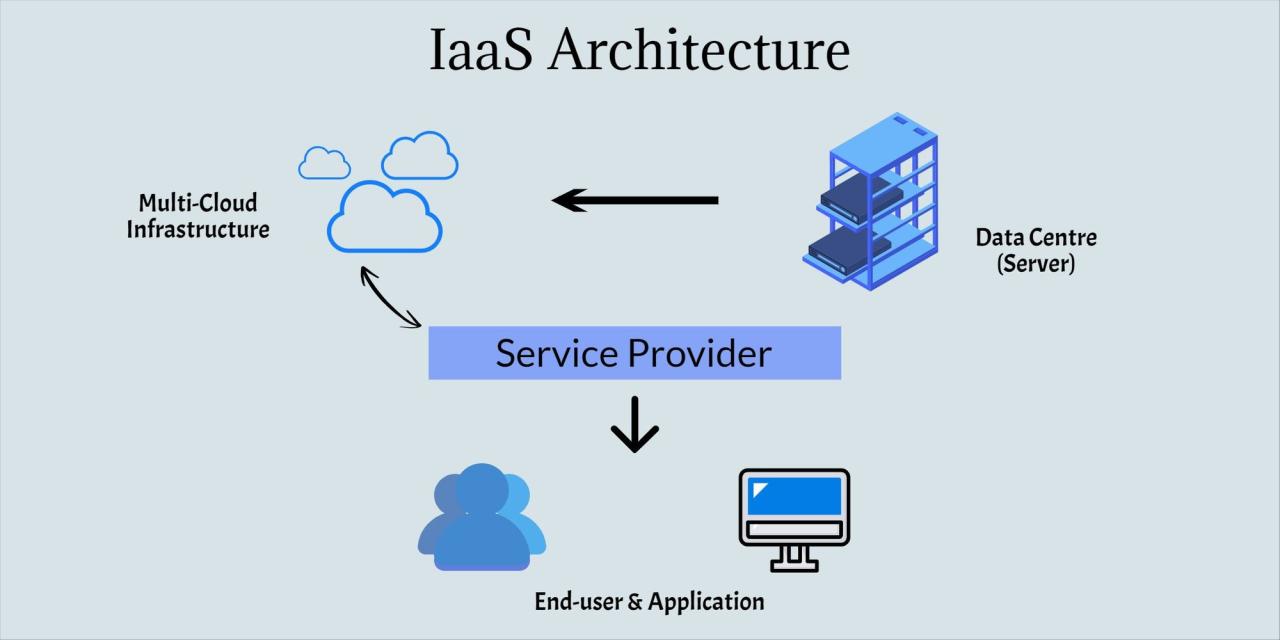
As the future of networking unfolds, cloud networking IaaS will continue to play a pivotal role in shaping the way businesses connect and operate. With its ability to deliver unparalleled scalability, flexibility, and cost-effectiveness, cloud networking IaaS is poised to become the cornerstone of modern network architectures.
Embrace the transformative power of cloud networking IaaS today and unlock the full potential of your network infrastructure.
